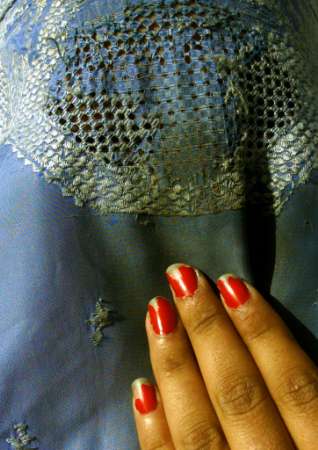Artifact: Free Hand
Reason , March 2002

A week after the Taliban lost control of Kabul, Reuters photographer Yannis Behrakis took this picture of an Afghan widow begging. Anonymous behind her burqa, she flashes a once-forbidden sign of personality: chipped red polish on her carefully maintained nails. She applied the polish the day after the liberation of Kabul. The chips came from work and the passage of time.
The Taliban outlawed wearing polish in the late 1990s, punishing some offenders by amputating a fingertip. Importing polish was banned only in July 2001, which suggests that women were still wearing painted nails within the safety of their homes. But a woman who had to beg on the street could not have afforded the risk of violating the ban in public.
The impulse for personal adornment is hard to stamp out. "Making special," art theorist Ellen Dissanyake's term to describe what all art and ritual have in common, is a deep human drive -- all the more so when the object is one's own body. By reshaping or decorating our outer selves, we express our inner sense of self: I like that becomes I'm like that. The right to wear nail polish, seemingly the most trivial of matters, is in fact a vital freedom, part of the very freedom to create oneself.